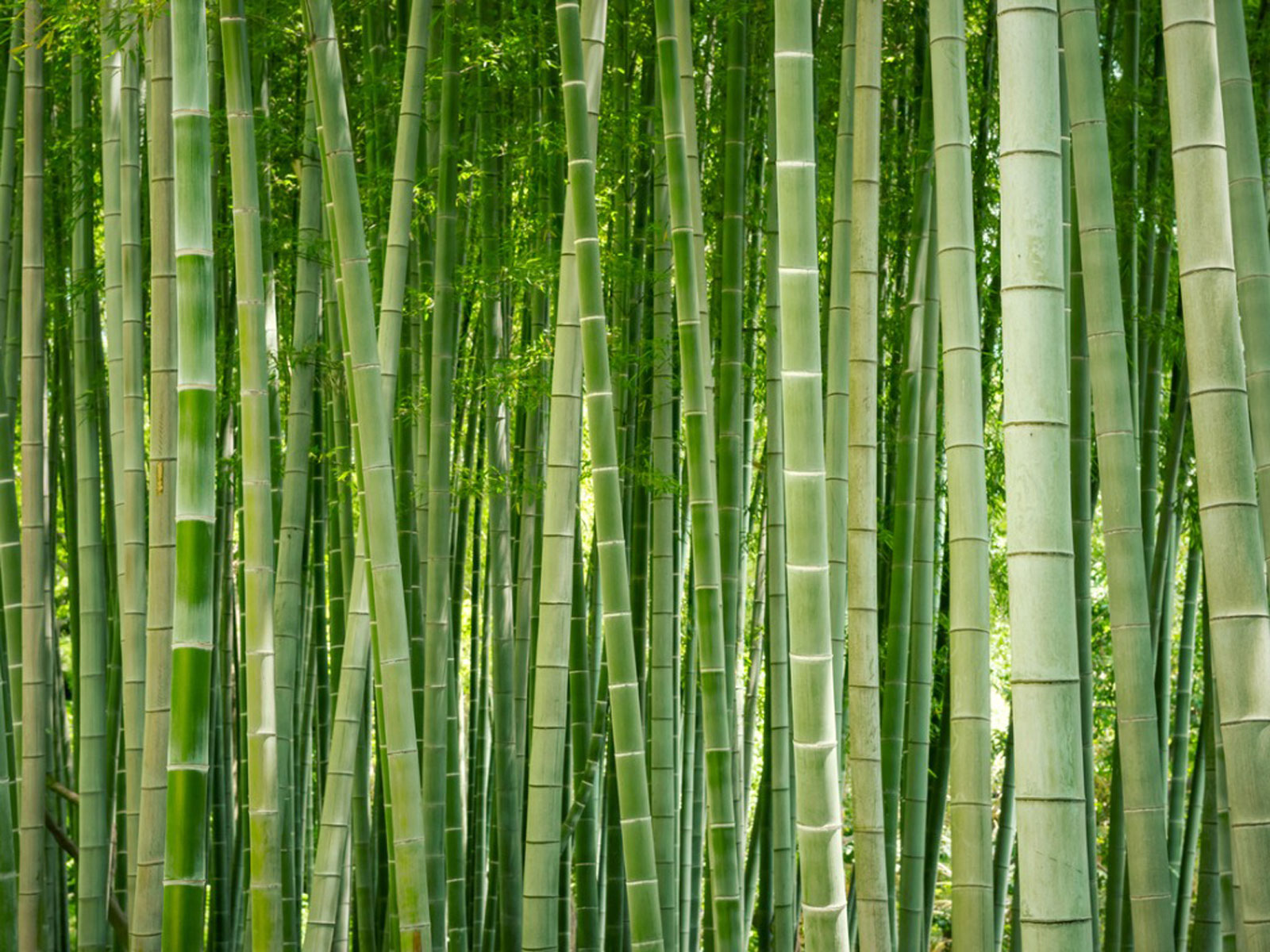Bamboo
Bamboo is a natural organic material. It is one of the most unique plants on earth. Bamboo is grown in abundance in many parts of the world, especially in tropical and subtropical regions. Most timber producing bamboos are from South Asia. The color of bamboo timber is pale yellow to almost gold. It is an industrial material also identified as the most promising building material. Bamboo timber is an alternative to tropical hardwoods in recent years. It is available in many forms.
Figure: Bamboo Sports Hall for Panyaden International School.
Advantages of Bamboo
- Bamboos are fast growing and high yielding.
- They are easily renewable.
- Bamboos quickly reach full maturity after only one or two years.
- Bamboo timber has a unique earthy odor while being worked.
- Bamboo timber is energy extensive, processed and glued up imported products.
- Strong bamboo fibers have tensile strength.
- It is highly resistant to warping and cupping in ambient humidity.
- Bamboo timber requires little fertilizer.
- Grows initially at full width.
- Bamboo timbers are used in-veneer, paper, flute, window blinds, fishing rods, ladders, scaffolding, carving etc.
Disadvantages of Bamboo
- Bamboo timber is a polluting material.
- Bamboo timber requires special care.
- It is susceptible to insect attack.
- Bamboo fibers tend to split and pull out when being cross-cut.
- Bamboo timber has been reported to cause skin irritation.
- Decay fungi are present in bamboo timber.
- The price of this timber is much higher which exceeds the cost of domestic hardwoods sometimes.
- It is inconsistent.
Bamboo is a natural organic material. It is one of the most unique plants on earth. Bamboo is grown in abundance in many parts of the world, especially in tropical and subtropical regions. Most timber producing bamboos are from South Asia. The color of bamboo timber is pale yellow to almost gold. It is an industrial material also identified as the most promising building material. Bamboo timber is an alternative to tropical hardwoods in recent years. It is available in many forms.
Figure: Bamboo Sports Hall for Panyaden International School.
Advantages of Bamboo
- Bamboos are fast growing and high yielding.
- They are easily renewable.
- Bamboos quickly reach full maturity after only one or two years.
- Bamboo timber has a unique earthy odor while being worked.
- Bamboo timber is energy extensive, processed and glued up imported products.
- Strong bamboo fibers have tensile strength.
- It is highly resistant to warping and cupping in ambient humidity.
- Bamboo timber requires little fertilizer.
- Grows initially at full width.
- Bamboo timbers are used in-veneer, paper, flute, window blinds, fishing rods, ladders, scaffolding, carving etc.
Disadvantages of Bamboo
- Bamboo timber is a polluting material.
- Bamboo timber requires special care.
- It is susceptible to insect attack.
- Bamboo fibers tend to split and pull out when being cross-cut.
- Bamboo timber has been reported to cause skin irritation.
- Decay fungi are present in bamboo timber.
- The price of this timber is much higher which exceeds the cost of domestic hardwoods sometimes.
- It is inconsistent.
REFERANCE TAKEN FROM WWW.CIVILTODAY.COM


